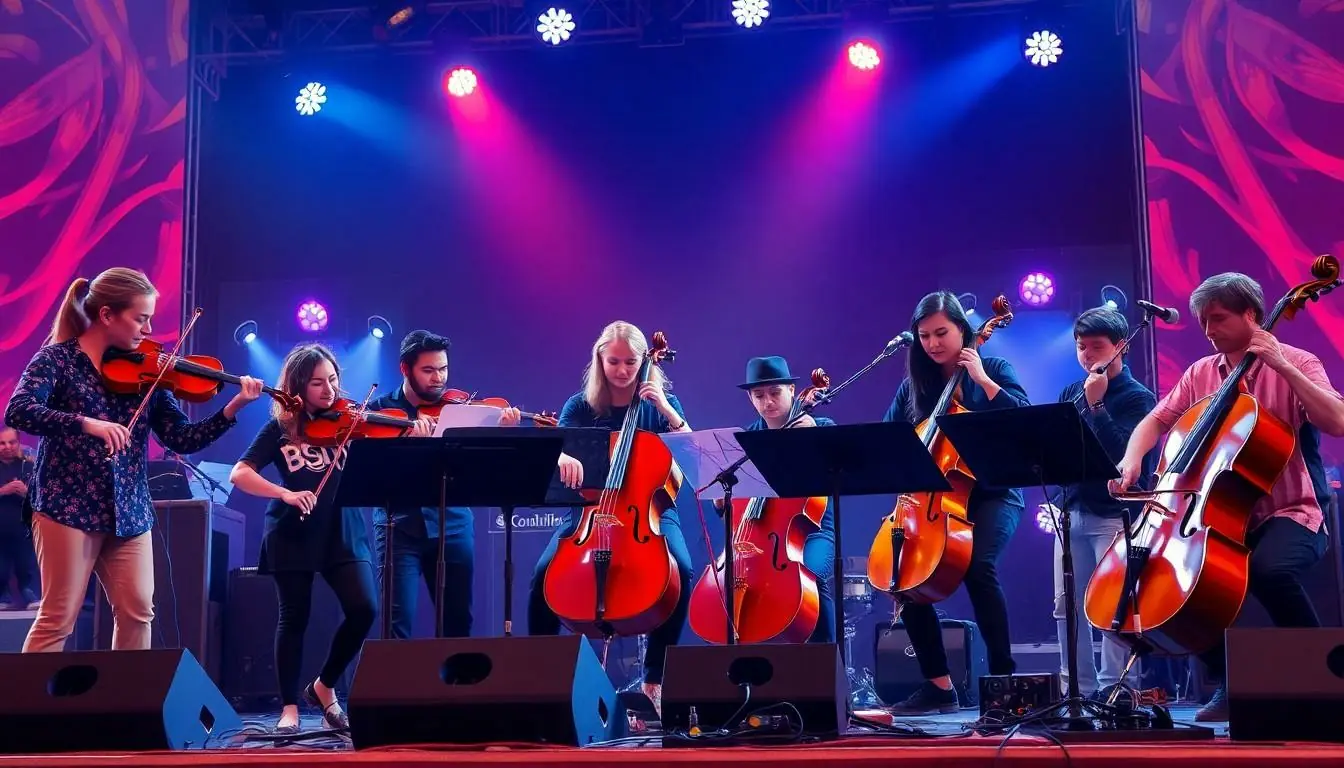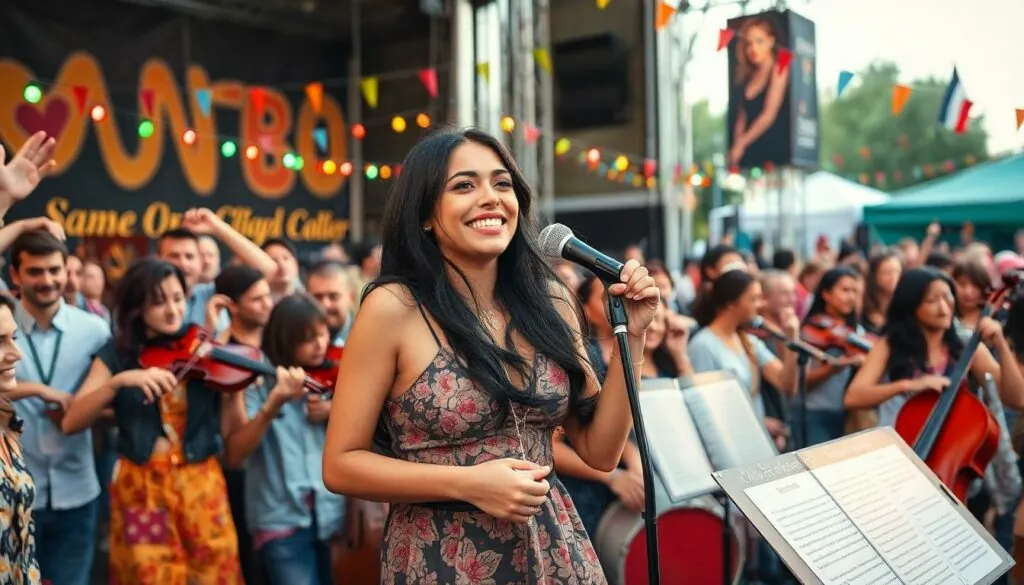Table of Contents
ToggleImagine a world where Beethoven shares the stage with Beyoncé. Welcome to the vibrant realm of pop classical music, where timeless symphonies meet modern beats. It’s the genre that proves classical isn’t just for stuffy concert halls but can also rock out at your favorite festival.
Overview of Pop Classical Music
Pop classical music combines classical compositions with modern pop elements, making it widely accessible. The genre appeals to diverse audiences, from classical music enthusiasts to pop culture fans.
Definition and Characteristics
Pop classical music features orchestral arrangements alongside catchy melodies and contemporary rhythms. This genre often includes adaptations of classical pieces, infusing them with pop sensibilities. Vocals typically enter the forefront, drawing inspiration from both genres. Instrumentation may include strings, brass, and electronic elements, enhancing its appeal. It balances classical music’s complexity with pop’s relatability, fostering a unique listening experience. Artists frequently collaborate across genres, showcasing their versatility and expanding their reach.
Historical Context
The emergence of pop classical music dates back to the late 20th century, with artists seeking to bridge disparate musical worlds. Bands like Electric Light Orchestra and soloists such as Vanessa Mae helped popularize this fusion. The genre gained prominence in the 21st century, boosted by television shows and films incorporating classical themes with pop interpretations. Notable performances at events, such as the Proms and Coachella, highlighted this blend’s growing popularity. Increasingly, contemporary composers experiment with pop elements while maintaining classical foundations, signaling an evolving musical landscape.
Notable Pop Classical Composers

Pop classical composers blend elements of classical music with contemporary influences, creating a unique sound that attracts diverse audiences. These artists draw inspiration from the rich history of classical music while incorporating modern sensibilities.
Classical Influences
Classical composers impact the music scene significantly, establishing a foundation for pop classical artists. Works by composers such as Mozart and Beethoven often serve as inspiration, providing melodic and harmonic structures. Pieces are frequently reimagined, allowing contemporary arrangements to emerge. These adaptations maintain the essence of the originals while infusing pop elements that resonate with modern listeners. Additionally, the orchestration of classical works lays the groundwork for lush arrangements featured in pop classical compositions.
Modern Innovators
Innovators like Ludovico Einaudi and Max Richter redefine sound in the pop classical genre. They incorporate minimalist approaches, pushing boundaries by melding classical techniques with electronic sounds. These artists explore emotional depths, creating immersive experiences that captivate audiences. Collaborations with pop singers and producers also expand their reach, bridging gaps between classical and popular music. Furthermore, performances often transcend traditional venues, engaging listeners in innovative ways during festivals and multimedia events.
The Fusion of Genres
Pop classical music brings together the sophistication of classical compositions and the vibrancy of contemporary pop sounds. This genre creates an engaging listening experience, appealing to a wide range of music lovers.
Popular Artists Embracing Classical Elements
Artists like Andrea Bocelli and Lang Lang showcase classical elements in their pop-infused performances. They blend haunting melodies with modern beats, introducing classical music to new audiences. Furthermore, musicians such as twoCellos gain recognition through their powerful arrangements that reinvent popular hits with a classical twist. Their unique styles demonstrate how classical influences enrich contemporary music. By collaborating with pop icons, these artists bridge the gap between genres, enhancing the appeal of both classical and pop music.
Impact on Mainstream Music
Pop classical music transforms mainstream music by introducing orchestral sounds into popular tracks. This fusion enriches the overall sonic landscape, creating fresh and exciting musical experiences. Events like the Grammys and various festivals often feature pop classical performances, further validating the genre’s impact on modern music culture. Additionally, film and television soundtracks increasingly incorporate classical themes, making them accessible to broader audiences. This integration not only elevates mainstream music but also cultivates a renewed interest in classical compositions among younger generations.
The Audience and Reception
Pop classical music appeals to a varied audience, spanning age groups and musical tastes. Fans include classical aficionados, casual listeners, and pop music enthusiasts, emphasizing the genre’s wide reach.
Demographics of Pop Classical Music Fans
Younger listeners often embrace pop classical music, drawn in by its blend of familiar melodies and sophisticated compositions. Surveys indicate that approximately 40% of pop classical fans are aged between 18 and 34. Older audiences also engage, with 30% of the demographic over 50, as they appreciate the genre’s reinterpretation of beloved classical pieces. Concert attendance suggests nearly 60% of attendees enjoy both classical and pop genres, highlighting crossover appeal. Various platforms such as streaming services and radio stations further promote this hybrid genre, ensuring its accessibility to diverse audiences.
Critical Acclaim vs. Commercial Success
Critical acclaim for pop classical music often aligns with commercial success. Multiple artists, like Andrea Bocelli and Ludovico Einaudi, receive awards and nominations, showcasing their artistic contributions. Chart performances reveal these artists regularly achieve high placements on music charts, with several tracks reaching the top ten. This success reflects both critical and popular appreciation, reinforcing the genre’s value in the music landscape. As sales data indicates, albums blending classical and pop elements often find significant commercial traction. The overarching impact signifies that this genre resonates across both critics’ reviews and audience preferences.
Pop classical music represents a vibrant fusion that captivates diverse audiences. By merging classical depth with contemporary pop flair, it creates a unique sound that resonates across generations. This genre not only revitalizes classical compositions but also invites new listeners to appreciate its rich heritage.
As pop classical continues to evolve, its impact on mainstream music is undeniable. With artists pushing boundaries and redefining genres, the future looks promising for this innovative blend. The ongoing collaboration between classical and pop musicians ensures that the genre remains dynamic and engaging, bridging the gap between tradition and modernity.





